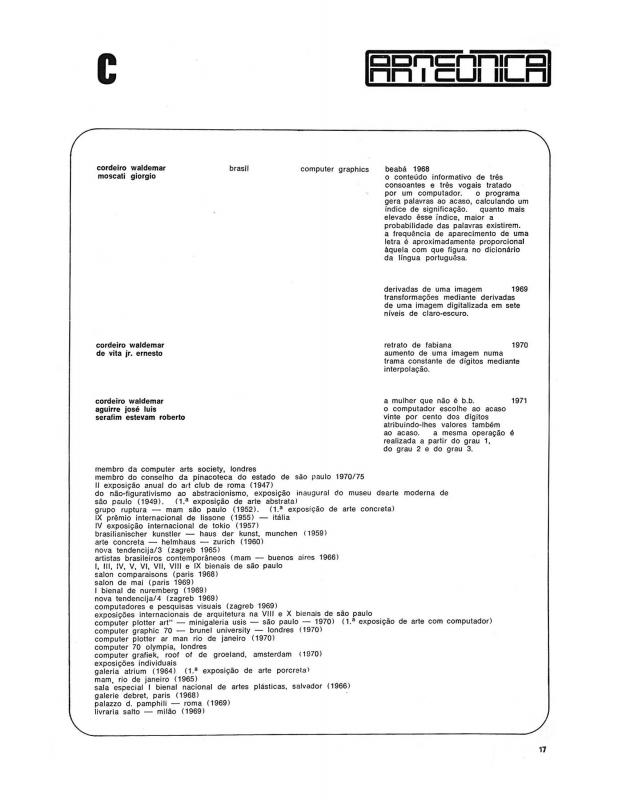Most of the essays Waldemar Cordeiro (1925–73) wrote in the 1950s set out his radical arguments on behalf of the objectivity of the work of art. In his opinion, art should be the result of an undertaking, the visual product of a rationally conceived idea. In this document, however, he mentions the scofflaw nature of what he calls “nonobjective Expressionism,” which he sees as a positive influence on the “unexpected” quality that must be part of any work of art. On the other hand, by referring to the links he sees between Concrete art and the above mentioned movement, he implies that the North American artist’s manual, subjective style is of secondary importance. He gives priority to the Kinetic effects of Pollock’s work that produce the proximity and similarity between the elements in the work, a formal aspect that is an essential artistic value to him. This document is important because Cordeiro makes a distinction between “Concrete” and geometric art, and stretches the definition of “concreteness,” recalling the drip painting he produced in the 1960s. The combative painter, designer, landscape painter, and art critic Waldemar Cordeiro was born in Rome, but settled in Brazil shortly after the Second World War. In the late 1940s he began to publish his theories in national newspapers. “O objeto” (doc. no. 1086891) is representative of the sort of ideas Cordeiro was advocating—during that period of profound disagreement concerning the visual arts in Brazil—based on the “concrete aspect” of art in terms of its potential for self-reference and the concept of art as a real, totally autonomous object. This prompted discussions of all kinds with contemporary artists and critics, in particular with the poet, journalist, and art critic [José Ribamar] Ferreira Gullar (1930–2016), who endorsed the subjectivity of art, outlining his “Teoria do não-objeto” (doc. no. 1091374) that would subsequently lead to the Neoconcrete movement in Rio de Janeiro. [As complementary reading on this subject, see other articles by Cordeiro in the ICAA digital archive, as follows: “Ainda o Abstracionismo” (doc. no. 1085351); “Arte concreta semântica” (doc. no. 1110835); “Arteônica” (doc. no. 1110836); “Balanço geral da vida oficial das artes plásticas em 1950” (doc. no. 1085395); “Computer plotter art: primeira mostra na América Latina” (doc. no. 1110487); “Exposição nacional de arte concreta: artes visuais poesia” (doc. no. 1232176); “Novas tendências e nova figuração” (doc. no. 1110840); “Ponto parágrafo na pintura brasileira” (doc. no. 1085281); “Prêmio Leirner de Arte Contemporânea, 1960” (doc. no. 1232976); (untitled) [“Produto direto de uma atitude crítica (…)”] (doc. no. 1087239); “Realismo: ‘musa da vingança e da tristeza’” (doc. no. 1110839); “Realismo ao nível da cultura de massa” (doc. no. 1090748); jointly written with Charoux, Barros, Féjer, Haar, Sacilotto, and Wladyslaw, the “ruptura” manifesto (doc. no. 771349), and its manuscript (doc. no. 1232213); “Teoria e prática do concretismo carioca” (doc. no. 1087287); “Todos atentos” (doc. no. 1090623); and “VII Bienal: ‘nova figuração’ denuncia à alienação do indivíduo” (doc. no. 1110842)].

















